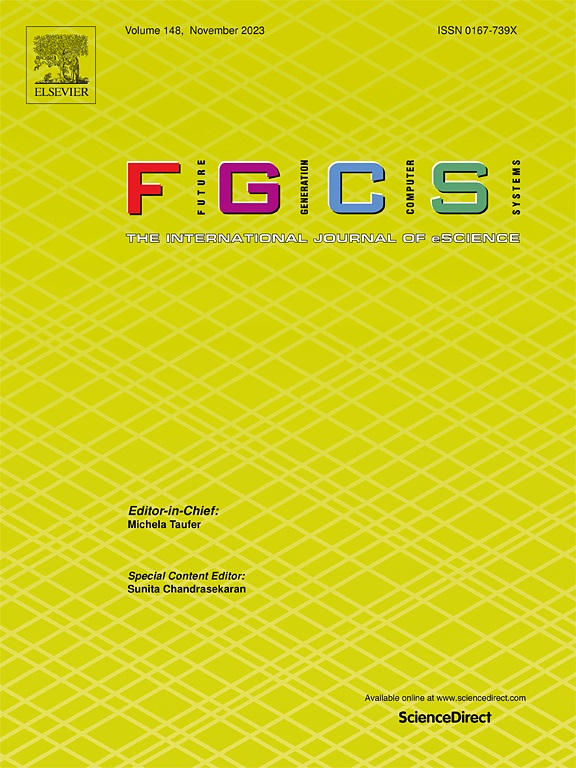A novel host-based intrusion detection approach leveraging audit logs
IF 6.2
2区 计算机科学
Q1 COMPUTER SCIENCE, THEORY & METHODS
Future Generation Computer Systems-The International Journal of Escience
Pub Date : 2025-07-19
DOI:10.1016/j.future.2025.107995
引用次数: 0
Abstract
Host-based intrusion detection systems (HIDS) struggle to detect advanced cyber attacks (e.g., APT, LoTL) due to their stealthy nature and reliance on either structural or semantic features alone. We hypothesize that integrating semantic audit log analysis with structural provenance graph learning improves detection accuracy and adaptability. To validate this, we propose MalSnif, a novel framework that (1) parses audit logs to construct provenance graphs enriched with process/event relationships, (2) simplifies graphs by pruning peripheral nodes while retaining critical attack trajectories, and (3) employs NLP techniques (word2vec, GRU, BiLSTM) to extract semantic features, combined with a graph convolutional network (GCN) for detection. Implemented using PyTorch and ETW, MalSnif addresses data imbalance via strategic downsampling during training. Evaluations show that our approach can effectively detect different kinds of cyber attacks and outperforms recent methods. In addition, our methods for simplifying process event sequences and provenance graphs also yield effective and explainable results.
一种利用审计日志的新颖的基于主机的入侵检测方法
基于主机的入侵检测系统(HIDS)很难检测到高级网络攻击(例如APT, LoTL),因为它们的隐身性和仅依赖于结构或语义特征。我们假设将语义审计日志分析与结构来源图学习相结合可以提高检测的准确性和适应性。为了验证这一点,我们提出了MalSnif,这是一个新的框架,它(1)解析审计日志以构建富含过程/事件关系的来源图,(2)在保留关键攻击轨迹的同时通过修剪外围节点来简化图,以及(3)采用NLP技术(word2vec, GRU, BiLSTM)提取语义特征,并结合图卷积网络(GCN)进行检测。MalSnif使用PyTorch和ETW实现,在训练期间通过策略下采样解决数据不平衡问题。评估表明,我们的方法可以有效地检测不同类型的网络攻击,并且优于最近的方法。此外,我们的方法简化过程事件序列和来源图也产生有效和可解释的结果。
本文章由计算机程序翻译,如有差异,请以英文原文为准。
求助全文
约1分钟内获得全文
求助全文
来源期刊
CiteScore
19.90
自引率
2.70%
发文量
376
审稿时长
10.6 months
期刊介绍:
Computing infrastructures and systems are constantly evolving, resulting in increasingly complex and collaborative scientific applications. To cope with these advancements, there is a growing need for collaborative tools that can effectively map, control, and execute these applications.
Furthermore, with the explosion of Big Data, there is a requirement for innovative methods and infrastructures to collect, analyze, and derive meaningful insights from the vast amount of data generated. This necessitates the integration of computational and storage capabilities, databases, sensors, and human collaboration.
Future Generation Computer Systems aims to pioneer advancements in distributed systems, collaborative environments, high-performance computing, and Big Data analytics. It strives to stay at the forefront of developments in grids, clouds, and the Internet of Things (IoT) to effectively address the challenges posed by these wide-area, fully distributed sensing and computing systems.

 求助内容:
求助内容: 应助结果提醒方式:
应助结果提醒方式:


